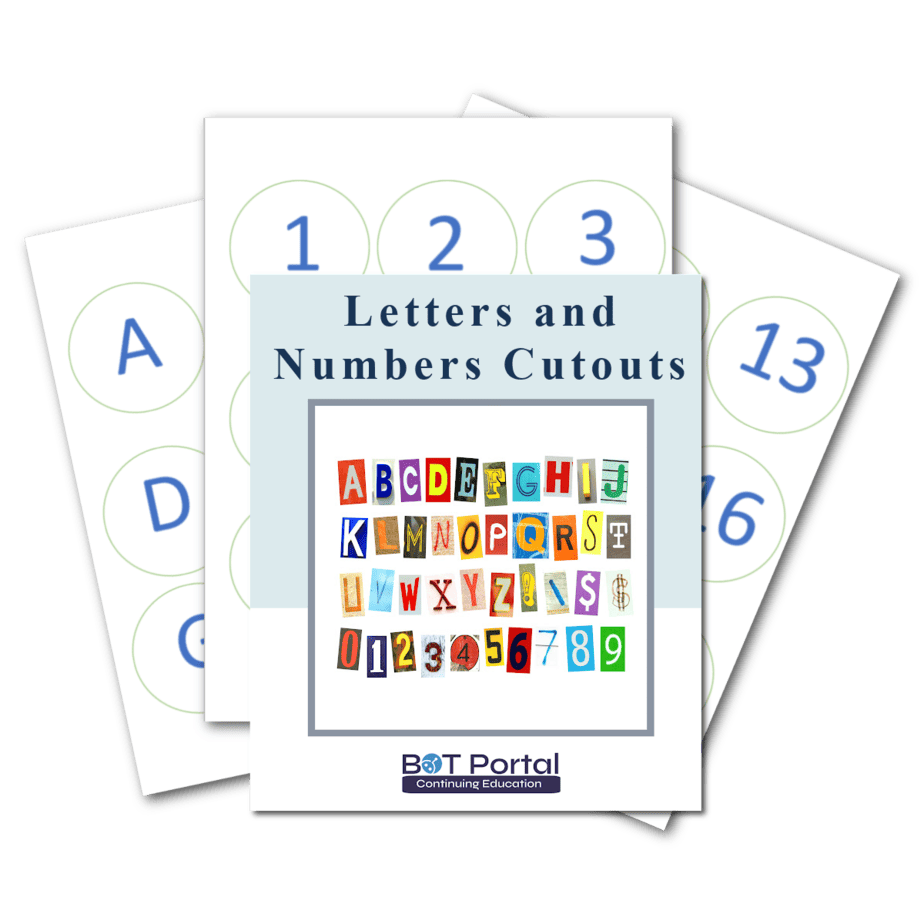Description
Letters and Number Circle Cutouts
Download and print this original compilation of letters and number circle cutouts 1-40 and letters A-Z to practice a variety of executive function skills required for occupational engagement. Buffalo Occupational Therapy uses these circles in both clinics for cognitive remedial techniques in respect to occupational performance to achieve good objective outcomes on assessments like SLUMS and MoCA, and Trail Making Test A and B.
How I use them:
- Cut and Laminate
- Place magnets on the back
- Use for executive function activities
- Use for dual tasking activities
- All ages
Some other ideas:
Using letter and number circle cutouts in occupational therapy (OT) can be a versatile and engaging way to address various therapeutic goals and objectives across different domains. Here are several ways these resources can be utilized:
- Fine Motor Skills Development:
- Manipulating small objects like letter and number circle cutouts can help improve fine motor skills such as precision grip, finger dexterity, and hand-eye coordination. Activities may include picking up, placing, and arranging the cutouts on a surface.
- Visual Perception and Discrimination:
- Matching letters or numbers to their corresponding shapes or slots can enhance visual discrimination skills. OTs can create sorting activities where clients match letters or numbers based on their shape, color, or size.
- Cognitive Skills Enhancement:
- Using letter and number circle cutouts can support cognitive skills such as letter and number recognition, sequencing, and memory. OTs may design activities where clients arrange the cutouts in alphabetical or numerical order or create simple patterns using letters or numbers.
- Language and Literacy Development:
- Engaging in activities that involve naming letters or numbers aloud, forming simple words or equations with the cutouts, or participating in letter or number identification games can promote language and literacy skills.
- Math Skills Practice:
- OTs can incorporate mathematical concepts such as addition, subtraction, multiplication, and division into activities using number circle cutouts. Clients can manipulate the cutouts to solve math problems or create number sentences.
- Sequencing and Planning:
- Designing activities that require clients to sequence letters or numbers in a specific order can enhance sequencing and planning skills. Clients may be asked to follow a sequence of steps to complete a task using the cutouts.
- Social Interaction and Communication:
- Group activities involving letter and number circle cutouts encourage social interaction, turn-taking, and cooperative play. Clients can engage in collaborative tasks such as building words or equations together.
What is included?
- Letter circle cutouts for the entire alphabet
- Number circle cutouts up to 40
- 2 pages of activity ideas and what cognitive processes they would address (how to guide your research)
Helpful Links:
Check out BOT Portal: Resource Site for Occupational Therapy Students and Practitioners




